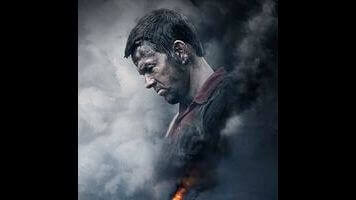An industrial disaster turns workmanlike in Deepwater Horizon

There’s a novelty inherent in seeing a Hollywood movie depict its characters’ chosen professions as unglamorously as Deepwater Horizon does when it shows the day-to-day operations of a drilling rig. These are some of the best parts of Peter Berg’s workmanlike disaster movie: riggers checking in at a heliport before being flown out for their 21-day shifts; a sore, tired-looking guy in safety-orange coveralls cracking a dumb joke; middle-aged men who pronounce “cement” as “see-ment” talking construction timetables; a visiting executive being asked to remove his magenta tie because of industry superstition. But in all other respects, this dramatization of the real-life 2010 blowout and fire that killed 11 people is a poor man’s Towering Inferno, despite the hefty $156 million budget.
The fact that this industrial disaster precipitated the worst maritime oil spill in U.S. history is tertiary; the movie dispenses with it in a single flash of text during its shapeless documentary epilogue. The focus here is on hardworking men (and one hardworking woman) against oil company stuffed shirts more interested in schedules than safety. On the side of American can-do are family-man chief electronics technician Mike Williams (Mark Wahlberg, reuniting with Berg after Lone Survivor) and paternalistic crew chief Mr. Jimmy (Kurt Russell); on the side of corporate greed is the cowardly Don Vidrine (John Malkovich, who’s notoriously bad at accents—his Cajun here is a work of outsider art).
Subtle this ain’t; the movie introduces the Deepwater Horizon rig by having a character remark, “Anything that big oughta be made by God,” and makes a climactic point out of a BP rep glancing up at a ragged flag flapping in the flames. A last-minute replacement for original director J.C. Chandor (All Is Lost), Berg directs in his trademark “whatever” handheld style. (Anyone who can find logic in the framing of any given dialogue scene deserves the inaugural A.V. Club No Prize.) In a funny way, Deepwater Horizon’s indifference to layout and direction furnishes more suspense for the fiery climax—because the audience really doesn’t know where any of the characters are going—than the strained cuts to bubbling cracks and creaking drill pipes that foreshadow the disaster.
There’s a welcome intrusion of horror once all hell breaks loose. Everyone gets covered in soot, sweat, and burn marks as they fan away choking smoke and help the gruesomely injured through claustrophobically identical corridors and wrecked control rooms, lit in colors that suggest that cinematographer Enrique Chediak was at least awake for these portions of the shoot. But none of it carries any dramatic weight. Despite its manageable running time and early attempts at verisimilitude (as long as one discounts the fact that it more or less opens with a child explaining where crude oil comes from), Deepwater Horizon struggles with self-organization as long as its characters aren’t literally trying to outrun death.
As entertainment, it works in the most rote way: the star power of Wahlberg, Russell, and Kate Hudson, who plays Mike’s worried wife; Malkovich’s predictable sliminess; the minor pleasure of seeing the good guys get out; the slight kick of watching something big crumble and burn while knowing that it’s only a special effect, real-world basis be damned. Perhaps that’s appropriate for a movie about people just trying to get their drab jobs done right, though one can’t help but wish for more.